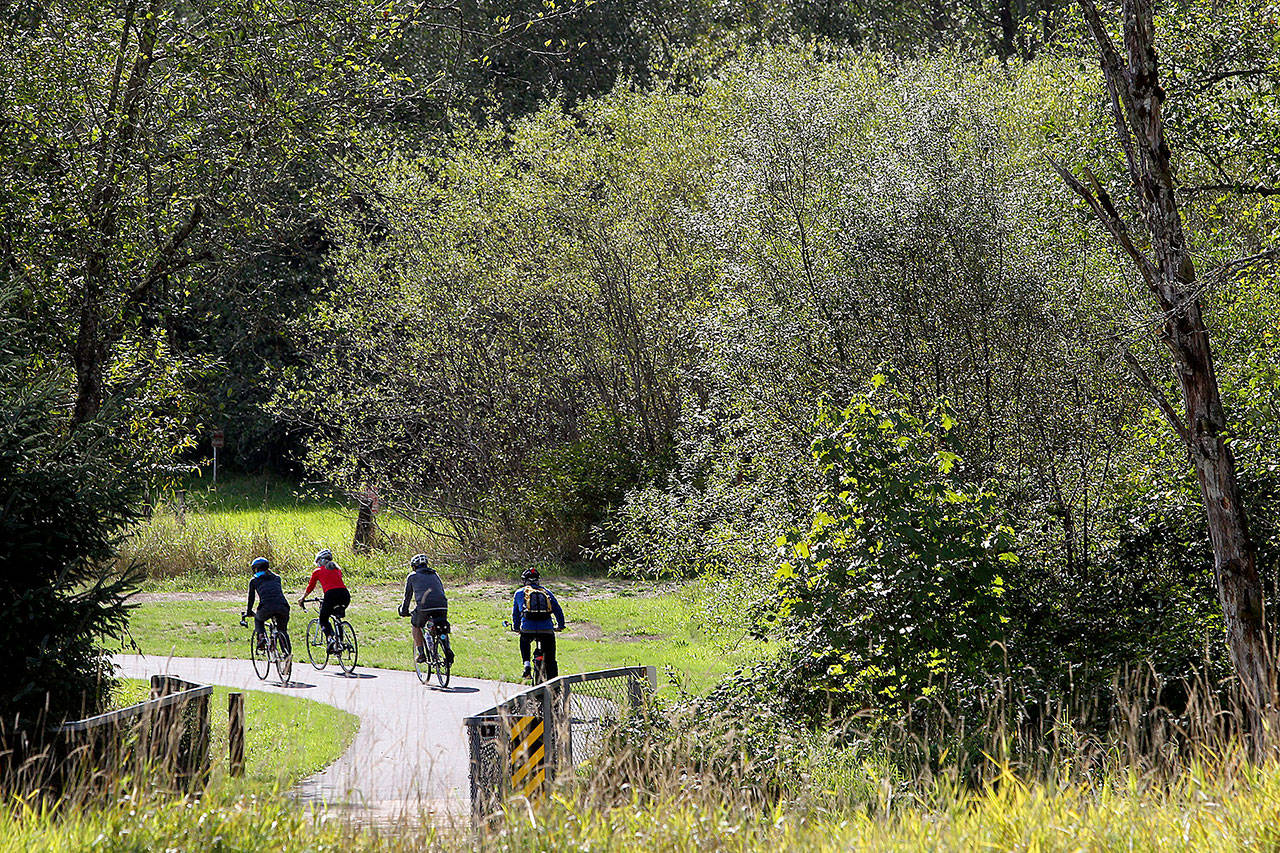By The Herald Editorial Board
Since its start in 1989, the Washington Wildlife and Recreation Program has invested more than $1.4 billion in state grants for a range of projects in every county of the state, providing and developing state and local parks, trails and shoreline access, protecting working farms and forestlands and restoring wildlife habitat.
In Snohomish and Island counties alone, the program has provided significant funding in recent years — matched by local dollars — for the Centennial Trail, Everett’s Henry M. Jackson Park, the Edmonds Pier, trails along the Sultan River, Ebey’s Landing on Whidbey Island and Barnum Point on Camano Island.
As the Legislature prepares its operating and capital budgets this session, supporters of the program, including the Washington Wildlife and Recreation Coalition, are asking state lawmakers to allocate up to $130 million to meet a growing list of project applications. Last year, cities, counties, agencies and private groups submitted 273 applications for the grants, a 12 percent increase over the last biennium.
Yet, even at that full request, some projects — including some in Snohomish County — are unlikely to make the cut this year; far fewer still if lawmakers don’t provide adequate funding. In recent years, the Legislature’s capital budgets have provided a fraction of the funding sought: $55 million in 2015, $65 million in 2013 and $42 million in 2011.
Program supporters are considering it a good sign, however, that Gov. Jay Inslee, in his proposed budget released last month called for $115 million for the program. Depending on the amount allocated, among the area projects that would receive grants:
$1.08 million — matched by $1.28 million in local funding — for a pedestrian and bicycle bridge at the Park at Bothell Landing;
$1 million — matched by $8.15 million locally — for waterfront access at Meadowdale Beach Park;
$500,000 — matched by $1.48 million locally — for development of a new 4.2-acre park in south Lynnwood with playground, picnic shelter, tennis courts, paths and more;
$500,000 — matched by $11.56 million locally — for Edmonds’ Civic Park; and
$500,000 — matched by $1.08 million locally — for new turf at Mountlake Terrace’s Evergreen Playfield.
That park development is critical to a county — and a state — that are growing. Snohomish County has added more than 125,000 residents in the last 10 years, while the state has added 1 million and is expected to grow by another quarter-million people over the next two years. The grants are necessary to provide more parks, trails and shoreline access for all residents and visitors.
Beyond park grants, the program also provides funding for habitat protection and restoration. A $1.49 million grant for a project on the Olympic Peninsula would help acquire 1,080 acres of habitat in the Hoh River watershed, securing a 30-mile corridor from the Olympic National Park to the Washington coast’s National Marine Sanctuary, protecting habitat for wild stocks of coho, chinook and sockeye salmon and steelhead.
In all, 30 project applications are for projects that would improve and protect salmon habitat, including 220 miles of stream banks, addressing a goal sought by the state task force on orca whale recovery.
In addition to providing recreation and habitat preservation, the grants serve as an economic driver for the state, helping to support a $26.2 billion outdoor recreation industry here that sustains about 201,000 jobs, $7.6 billion in annual wages and $2.3 billion in local and state taxes each year, according to a 2015 report prepared for the state Recreation and Conservation Office.
The work of the Washington Wildlife and Recreation Program is especially important now because a federal grant program — the Land and Water Conservation Fund — has been dormant since September and is waiting for reauthorization and funding by Congress.
Lawmakers face tough choices in setting budgets, weighing the value of projects, programs and agencies. But years of less-than-full funding for the grant program — during a time of increased growth, heavy demand on parks and severe impacts on the environment — requires that an effort be made to make up for lost ground. Inslee’s budget offers a reasonable and effective funding target for legislators.
The Washington Wildlife and Recreation Program was launched during the state’s centennial year, a celebration of the state’s public lands and recreational opportunities and a promise to protect both.
Thirty years on, ample funding of the program will honor that legacy.
Talk to us
> Give us your news tips.
> Send us a letter to the editor.
> More Herald contact information.

























